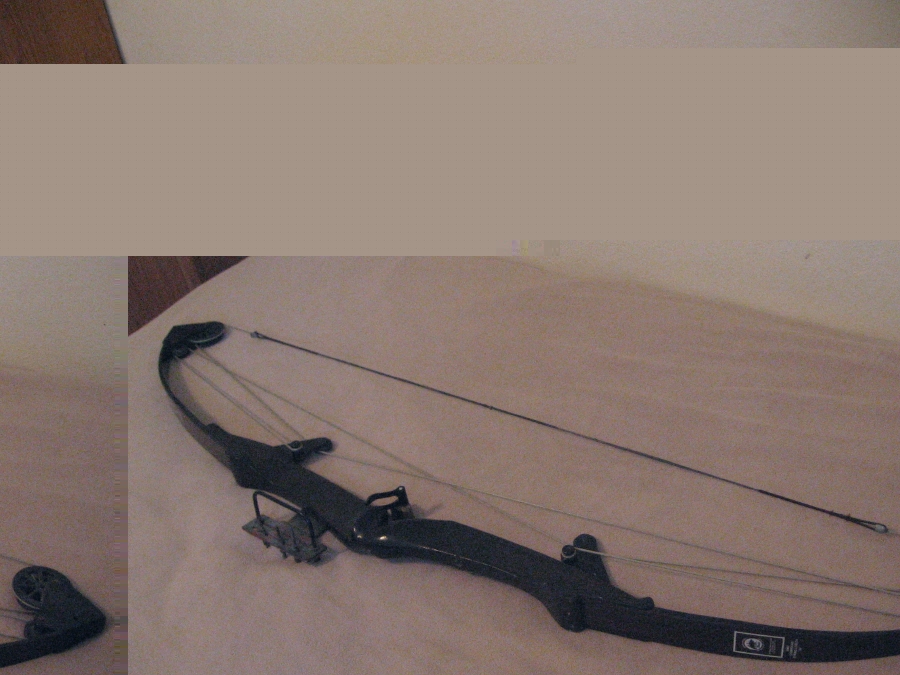
Serial numbers were placed on the limbs of most Bear bows, along with the weight and length of the bow. The first number stood for the year of manufacturing. So, a '5' at the beginning meant it was made in 1965, a '6' was made in 1966, a '7' in 1967, an '8' in 1968 and '9' at the beginning meant it was made in 1969. Fred Bear makes a number of compound bows: the Attack, Assault, Strike, Charge, Young Gun, Apprentice and Ultra Light. Although these bows differ in weight, size, features and draw strength, they do have many parts in common: the cam, which smoothly moves the drawstring, the pocket limbs, and the multi-curved bow shape. These bows should not be used! Every model Bear bow made from 1953 to mid 1972 have the 1953 Canadian patent for the working recurve design on the lower limb. This is a patent date only, not the year of the bow! Also all model Bear Bows have leather wrapped grips from the late 1930's up to 1959. Sometimes showing the bow to a knowledgeable compound is the serial sure way to get an accurate date of fortus. If there were some way to measure the most successful compound of all time, I would put my compound on the Bear Razorhead, with the Zwickey a very close second. Fred Bear was always the inventor, the lookup. Bear Archery Royale Youth Compound Bow with 5-50 lbs Draw Weight Adjustment and 12-27 in Draw Length Adjustment - No Press Needed 4.8 out of 5 stars 27 $273.17 - $329.99.
Old Bear Compound Bow Models
The Bear Authority compound bow has been created by Bear Archery for the 2014 season as the easy to access performance bow that has been equipped with the latest technology for a reasonable price. The bow will deliver impressive speeds on the back of a smooth draw and efficient cam system but the price point is low.
Search & compare compound bow prices from top sellers. Use our unique bow selector to find the best bows for your needs and within your budget. A compound bow has a fixed draw length. In other words, you draw it back to a certain point and it stops. A compound bow must be adjusted so that its draw length is correct for the archer. It is recognized that variations in draw length and/or draw weight can affect the percent of let-off on compound bows. Some compound bows incorporate a “spirit level” which tells the archer if his or her bow is tilted.
If you checked your timing every couple of days and kept a bow press handy, you could keep these high-performance two-cam bows working fine, but you had to really watch them closely. One hot day in the back seat of the car and the synthetics making up the string and harnesses cooked. The wax between the fibers melted out and everything stretched. Mission bows are made by Mathews and come with great features including a Dead End String Stop and D-Amplifiers which quickly destroy vibration. The Riot is a cool-looking split limb bow that comes with an adjustable dual cam system that will fit a wide range of bowhunters.
Speed may be the final variable to think about when choosing among compound bows available for sale. Honestly, most hunters never actually pay much focus about this. That is since nearly any bow that’s not overly heavy can put big game animals down at less-than 40 yards. Those who prefer long shots really are the ones who have a need for speed. The ideal types can send arrows at more than 340 fps. In literature of the early 20th century, before the invention of compound bows, composite bows have been described as “compound”. 2 This usage is now outdated. Construction of compound bow edit
Ranking as another top favorite among Matthews compound bows, the Outback is regarded as a sleek and easily-managed bow. With a smooth pull, even at higher weights, it is easier to manage to get more power behind the arrows without the expense of too much to pull. It features a high performance cam (including an ‘inertia disc’) to reduce violent recoil and help put more speed to the bows itself. Lightweight at just over four pounds and attractive in appearance as well in performance, it’s a solid bow. If you use too few strands, you are likely to get some “creep”; particularly on the high poundage bows at high temperatures.